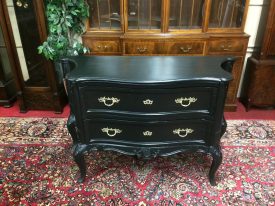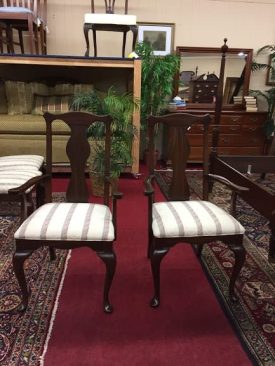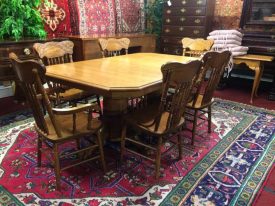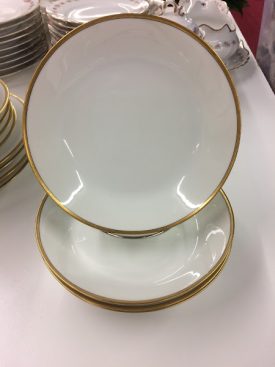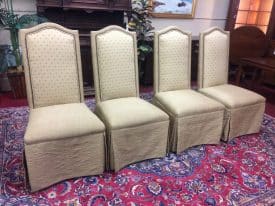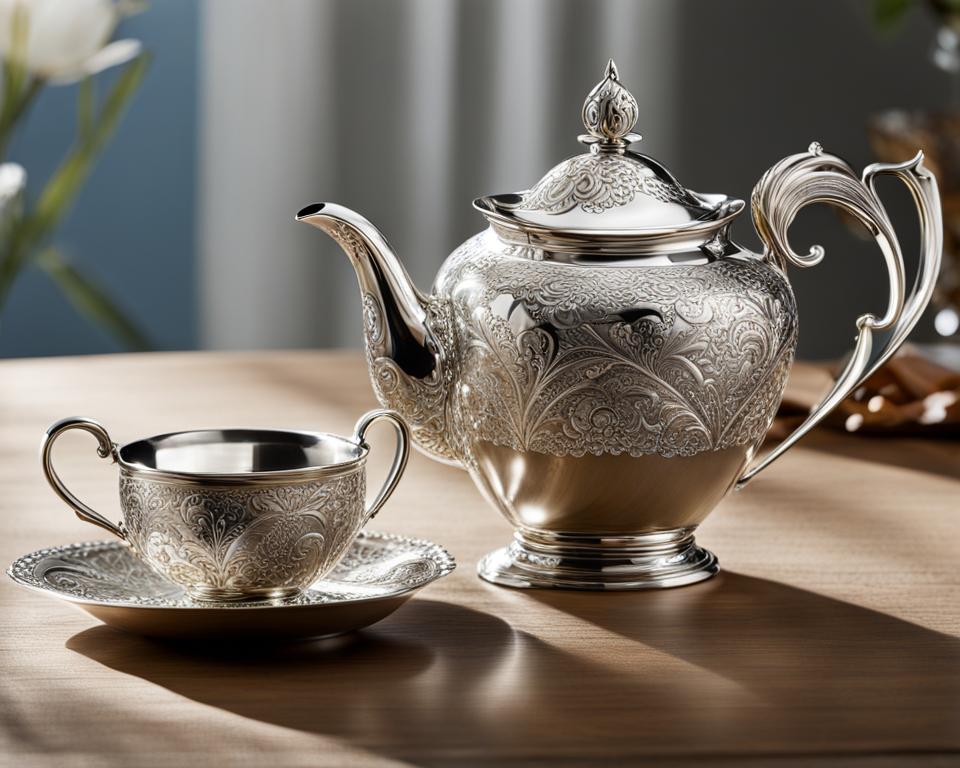Embracing a cozy atmosphere in small spaces or apartments begins with selecting the appropriate furnishings. The key lies in prioritizing space-saving furniture and compact furniture solutions that blend functionality with style. Owners of furniture for tiny homes and advocates of minimalist furniture for small spaces understand the importance of choosing items that are not only space-efficient but also make a statement. By incorporating clever furniture designs that serve more than one purpose and occupy less room, one can craft a sophisticated and practical living environment.
Key Takeaways
- Select multipurpose and space-saving furniture to maximize small living areas.
- Opt for furniture with sleek and smart designs that contribute to an open and airy feel.
- Choose pieces with storage solutions to keep your space organized and clutter-free.
- Incorporate transparent or reflective surfaces to give the illusion of a more expansive space.
- Implement convertible furniture pieces that adapt to various needs within your home.
- Utilize vertical space with mounted shelves and raised furniture for additional storage.
- Consider the scale and proportion of furniture to ensure it fits comfortably in your space.
Maximizing Utility with Multipurpose Furniture
When faced with the challenge of decorating a compact area, choosing the right small space furniture becomes essential. Thoughtfully selected pieces can enhance both functionality and style in your home. For those with limited square footage, multipurpose furniture is not just a savvy choice; it’s a necessity to make the most of the available space.
Doubling Functionality: Furniture That Offers More
Consider the versatile ottoman, a prime example of space-saving furniture with dual purpose. Not only does it offer a place to rest your feet but paired with a cozy chair, an ottoman also provides excellent concealed storage. This hidden compartment can be a perfect spot to stow away blankets, books, or electronics, keeping them accessible yet out of sight.
Smart Picks: Convertible Options for Limited Spaces
Transforming your living space to accommodate guests doesn’t require a magic wand—it just requires a convertible sofa. Sleeper sofas and daybeds are quintessential apartment furniture ideas that let you seamlessly switch between daytime seating and a comfortable bed. These smart picks exemplify the essence of modern living: where design meets convenience, and style meets functionality. By investing in furniture that adapts to your needs, you can foster a living area that feels open, organized, and multipurpose.
Consideration of Proportions in Compacted Living Areas
When it comes to enhancing compact living areas, the significance of proper proportion in your choice of furniture for tiny homes can’t be overstated. To achieve an inviting atmosphere that doesn’t feel overcrowded, evaluating the scale of furniture against the size of the room is key. It’s not solely about measuring floor space but also considering the height and volume that each piece contributes to the overall layout. An oversized couch might dwarf a tiny living room, while an undersized shelf might look lost on a sizable wall. The challenge lies in striking the perfect balance with minimalist furniture for small spaces that harmonize with the living area’s dimensions without compromising on comfort or style.
- Selecting low-profile sofas and chairs, which maintain visibility and fluidity throughout the room.
- Opting for furniture with exposed legs which can help create an impression of more floor space.
- Choosing wall-mounted or floating shelves that take advantage of vertical space and reduce clutter.
Integrating compact furniture solutions not only optimizes available space but also contributes to a more organized and aesthetically pleasing home environment. The following table highlights the recommended dimensions for basic furniture pieces in small living areas:
| Furniture Piece | Ideal Height | Ideal Width | Ideal Depth |
|---|---|---|---|
| Coffee Table | 16-18 inches | 30-48 inches | 18-24 inches |
| Sofa | 31-34 inches | 72-84 inches (2-3 seater) | 34-38 inches |
| Bed (Queen) | 25 inches (platform style) | 60 inches | 80 inches |
| Dining Table | 28-30 inches | 36-44 inches (round) | 30 inches |
Ultimately, a well-proportioned space will look better, feel more comfortable, and function with greater efficiency. By carefully assessing the scale of minimalist furniture for small spaces, homeowners can create a harmonious environment that feels open, less cramped, and is perfectly tailored for their lifestyle.
Strategic Selection: Furniture That Fits Your Space
When equipping your apartment with space-saving furniture, precision is paramount. Every inch is crucial, and ensuring that each piece of furniture not only suits your aesthetic but also conforms perfectly to the available space can make the difference between a cluttered room and a harmonious sanctuary.
Measuring with Precision: The Key to Proper Fit
Before embarking on your furniture hunt, arm yourself with a tape measure. Dimensions are the unsung heroes in the quest for apartment furniture ideas. Taking meticulous measurements of the length and width of your walls, doorways, and windows, plus any quirky architectural details, lays the groundwork for smart furniture choices. Remember, to achieve a spacious feel, you must allow breathing room between pieces for easy movement and visual balance.
Demystifying Dimensions: What Qualifies as Apartment Size Furniture
Not all furniture is crafted with small spaces in mind. To categorize something as small space furniture, it’s not just about a reduced footprint; it’s about marrying functionality with scale. A typical sofa spans about 35 inches deep and 84 inches wide, but for the compact living enthusiast, apartment sofas are narrower, often measuring between 68 to 80 inches wide. This condensed size means they slip seamlessly into smaller rooms without sacrificing comfort or seating space. By grasping the nuances of these dimensions, you can select pieces that resonate with each other and the room, bringing about a cohesive, inviting, and thoughtfully proportioned environment.
Leveraging Visual Tricks to Enhance Spaciousness
In the quest to make small rooms feel larger, homeowners and designers alike turn to visual strategies that can transform a compact space. Through the careful selection and placement of space-saving furniture and creative design elements, these methods aim to give an airy and expansive feel to any minimalist furniture arrangement for small spaces.
The Illusion of More: How Color and Light Affect Perception
Color schemes play a critical role in shaping our perception of space. Lighter colors, known for their ability to reflect natural light, have a remarkable capability to make a room feel more spacious and open. By incorporating pastels or muted shades in various elements such as wall paint and furnishings, small rooms can appear larger than they actually are. Additionally, the integration of light wood furniture, with its inherent property to reflect light, can further enhance the sensation of an expansive environment.
Transparent and Reflective Surfaces to Open Up Areas
To maintain a sense of flow and continuity, introducing furniture with transparent materials is a strategic choice. Glass top tables and acrylic chairs preserve visual real estate, avoiding visual clutter and allowing light to permeate throughout the space. Reflective surfaces also add to this effect; mirrors can double the room’s visual capacity and amplify brightness. Thoughtful placement of mirrors can redirect light into darker corners, effectively bringing the entire room to life.
| Element | Visual Impact | Functionality |
|---|---|---|
| Light-Hued Wall Paint | Enhances brightness, creating the illusion of depth | Provides a neutral backdrop for art and decoration |
| Light Wood Furniture | Reflects natural light, making spaces feel open and airy | Sturdy yet visually lightweight for compact living areas |
| Glass Top Tables | Creates uninterrupted sightlines, enhancing roominess | Offers a practical surface area without visual bulk |
| Acrylic Chairs | Maintains a clean look, minimizing visual space occupied | Modern, stylish, and surprisingly strong seating options |
| Mirrors | Visually expands the room, increases light distribution | Practical for grooming and adding a decorative touch |
By embracing these key visual tricks — color palette optimization, manipulating light, and choosing minimalist furniture for small spaces with transparent and reflective attributes — even the most confined spaces can exhibit an aura of openness. Clever design, thus, is not only an expression of style but a practical approach to living large, no matter the size of your home.
Integrating Storage into Your Stylish Space
When it comes to living comfortably in small spaces, innovative storage solutions are crucial. For those who’ve taken the bold step of downsizing into a furniture for tiny homes lifestyle, the challenge often lies in balancing functionality with an aesthetically pleasing design. Fortunately, with compact furniture solutions thriving in the market today, storage can be seamlessly integrated into stylish pieces that don’t compromise your home’s elegance.
Consider the following table, which features a curated selection of furniture pieces that merge style with essential storage options, an ideal fit for tiny homes and compact living:
| Furniture Type | Description | Functionality | Design Appeal |
|---|---|---|---|
| Coffee Table with Drawers | A low table perfect for central living spaces. | Drawers conceal items such as remotes, magazines, and small electronics. | Choice of materials and finishes to complement any décor style. |
| Storage Ottoman | A multi-functional piece that can be used as a footrest, seat, or coffee table. | Lift the top to store blankets, books, or board games. | Available in various fabrics to add texture and color to the room. |
| Platform Bed with Storage | An elevated bed frame that includes drawers or shelving underneath. | Maximizes floor space by using the area under the bed for storage. | Sleek designs that offer a modern look and help maintain a clutter-free bedroom. |
| Wall-mounted Shelves | Shelving units affixed directly to the wall to store and display items. | Frees up floor space while providing ample room for storage and decoration. | Can be styled creatively with various arrangements to fit any room’s ambiance. |
Incorporating these strategic choices not only caters to storage needs but also ensures that every square foot is utilized efficiently. Going beyond mere functionality, these compact furniture solutions are crafted with the aesthetic finesse that compliments the modern minimalist trend, often seen in furniture for tiny homes. By choosing pieces that embody both utility and style, one can savor the joys of a clean, organized, and chic living environment.
How do you choose the right furniture for small spaces or apartments?
When it comes to outfitting small spaces or apartments, the selection of furniture must be strategic, seeking to maximize space without sacrificing style or comfort. To aid in this process, individuals should focus on innovative designs that provide multifunctionality and scale well with the size of their living area. Each piece’s ability to contribute to a sense of spaciousness is also a vital factor to consider. The following points encapsulate the primary considerations for choosing furniture that will make the most of compact spaces:
- Multipurpose Functionality: Seek out pieces that serve more than one purpose, such as sleeper sofas, storage ottomans, and extendable dining tables.
- Proportions: Ensure that the furniture is in line with the scale of the room. Overly large items can overwhelm the space, while very small pieces might seem out of place.
- Visual Spaciousness: Opt for designs that create the illusion of more space, such as those with slender lines, glass components, or reflective surfaces.
- Storage Integration: Look for pieces that offer storage, helping to keep clutter to a minimum and preserving the room’s open feel.
The endeavour to select the perfect furniture must not overlook the impact of visual tricks and the clever use of space. To illustrate these concepts, consider the summary table that lays out a comparative look at various types of space-efficient furniture suitable for small areas:
| Furniture Type | Utility | Space Saving Benefit | Ideal for Room Size |
|---|---|---|---|
| Wall-mounted shelves | Storage, display | Clears floor space, vertical utilization | Any small space |
| Murphy beds | Sleeping, multipurpose area | Frees up space when not in use | Studio apartments |
| Nesting tables | End use, grouped or separate seating | Stackable, configurable as needed | Living areas |
| Drop-leaf tables | Dining, workspace | Adjustable surface area | Dining spaces, home offices |
When discerning how to choose the right furniture for small spaces or apartments, one must combine practicality with aesthetic appeal. The ideal selection will contribute positively to both functionality and visual flow, thus transforming a limited area into a welcoming and versatile home.
Finessing Furniture Arrangement For Flow
When it comes to enhancing the functionality and aesthetic appeal of a small space, the strategic arrangement of space-saving furniture is paramount. It’s not just about selecting minimalist furniture for small spaces, but about placing each piece mindfully to accentuate the overall flow of the room. Designs that prioritize flow and movement can transform a modest area into one that feels spacious and effortlessly navigable.
One of the key tactics to achieving this is maintaining sufficient clearance between pieces. This not only facilitates easy movement but also helps the room to appear more open and less congested. Each item should be carefully positioned to draw attention to the room’s best features, such as a beautiful view or a piece of statement wall art, without impeding foot traffic.
- Choose slender-profile couches and chairs that surround a central coffee table, leaving clear walkways around them.
- Opt for wall-mounted or floating shelves to free up valuable floor space.
- Select beds with storage drawers beneath to reduce the need for additional storage units.
- Consider using a strategic placement of area rugs to delineate various “rooms” within an open-plan space.
It is also crucial to avoid allowing furniture to block natural light sources as a well-lit room feels inherently larger. Transparent or highly reflective surfaces can amplify this effect, creating a visible expansion of the space. Ultimately, furnishings that serve multiple purposes and can be easily moved or adjusted provide the flexibility often needed in tight quarters, satisfying various functional demands without surrendering style or comfort.
Embracing Minimalism Without Compromising Style
The philosophy of minimalism has long been extolled in modern interior design, particularly in addressing the unique challenges of furnishing smaller spaces. This less-is-more stance goes beyond mere aesthetics, embracing functionality that aligns with the streamlined lifestyle of urban apartment dwellers. By decluttering living areas and selecting thoughtfully designed pieces, one can forge a serene environment that is both practical and visually appealing.
Less Can Be More: Why Fewer Pieces Work Better
When one considers minimalist furniture for small spaces, the mantra ‘Less can be More’ becomes particularly resonant. Furnishing an apartment with fewer items does not only cater to the spatial restraints but amplifies the quality of each chosen piece. Space-saving furniture, with its dual functions and sophisticated simplicity, invites residents to enjoy an uncluttered habitat that simultaneously exudes elegance and comfort. With a careful selection of versatile pieces, any petite living area can transform into a multipurpose haven, free from overcrowding and visual noise.
Minimalist Furniture: Chic and Functional Design Elements
Embracing apartment furniture ideas within the framework of minimalism does not equate to sacrificing flair or functionality. Furniture that embodies a minimalist design ethos is often characterized by sleek lines, neutral color palettes, and ingenious storage solutions. These pieces assert their presence through clean geometries and understated sophistication, becoming functional focal points of the room. For instance, a sculptural yet streamlined console table that doubles as a workstation, or a bed frame with hidden drawers, contributes to a seamless and efficient living experience.
- Multifunctional pieces add value to each square inch of the apartment—think of sofa beds and nesting tables that take up less space while serving multiple purposes.
- Intelligent design facilitates concealed storage options, allowing essentials to vanish from sight, thus maintaining a tidy and spacious environment.
- Coherence in style and proportion ensures that each select piece complements one another while resonating with the broader minimalist decor.
By integrating minimalist philosophies into the selection of apartment furniture, individuals relish in the harmonic balance of beauty, utility, and spaciousness—a triad that elevates the standard of compact living.
Small Space, Big Impact: The Role of Statement Pieces
In the realm of furniture for tiny homes, the strategic use of statement pieces can be transformative. Selecting a singular, eye-catching item can define a room’s aesthetic and express personality without taking up precious square footage. These key compact furniture solutions not only speak volumes about one’s style but also create an illusion of spaciousness by drawing focus and creating a dialogue within the space.
Consider a vibrant, plush armchair that beckons from a cozy corner, or a sleek, sculptural coffee table that anchors the living area. Employing such pieces elevates the function of everyday items to artful centerpieces. Additionally, innovative designers are now crafting multi-functional statement pieces that blend bold style with pragmatic utility—perfect for compact living.
| Statement Piece | Function | Style Impact |
|---|---|---|
| Bold-patterned Armchair | Seating & Visual Anchor | Creates a Focal Point |
| Oversized Wall Art | Decor & Theme Inspiration | Adds Height and Dimension |
| Unique Shelving Unit | Storage & Display | Utilizes Vertical Space |
| Designer Floor Lamp | Lighting & Ambiance | Adds Layers and Warmth |
Owning fewer pieces doesn’t have to mean sacrificing style. In fact, it provides an opportunity to make every item in your space count. Whether your preference lies with modern minimalism or eclectic vibrancy, the integration of distinctive decor ensures your small space makes a big statement.
Understanding Scale to Keep Spaces Cohesive
When it comes to furnishing small living environments, achieving a sense of aesthetic harmony is often about striking the right balance with scale. Whether it’s about choosing space-saving furniture for your city loft or ensuring that your tiny home doesn’t feel overwhelmed by oversized sofas, understanding scale is crucial. By coordinating furniture sizes, we not only maximize functionality but also enhance the overall feel and flow of our space. Let’s delve into how to maintain this delicate balance in small-scale interiors.
Coordinating Furniture Sizes for Aesthetic Harmony
In a compact living space, each furniture piece should be thought of as a part of a larger composition. It’s not just about selecting apartment furniture ideas that are trendy; it’s about ensuring that each item is in proportion to the other elements within the room. The right blend of furniture sizes can create a seamless look that feels both cohesive and welcoming. Consider, for instance, a sleek, low-profile couch paired with a slim coffee table; both add utility without overpowering a small apartment.
The Scale Effect: Larger vs. Smaller Pieces in Room Design
The choices between larger and smaller pieces can significantly impact the perception of space in a room. Larger, anchoring pieces bring a sense of stability to a space, while smaller accents can provide the finishing touches that complete a design. However, in the context of furniture for tiny homes, one must carefully select even these larger pieces to ensure they do not dominate the environment. Below is a comparative look at how different-sized furniture can affect the spatial dynamics of a room.
| Furniture Type | Effect on Room Dynamics | Ideal Use |
|---|---|---|
| Larger, Anchoring Pieces | Adds a focal point and stability; can make a room feel full if not chosen wisely | Use selectively, ensure they have a clear function and are scaled to the room size |
| Smaller, Accent Pieces | Enhances the room decor without cluttering; adds personality and cohesion | Incorporate as functional decor that complements the larger items |
| Multi-functional Furniture | Optimizes space by serving dual purposes; smart option for limited square footage | Choose pieces that are versatile, like a storage ottoman or a murphy bed with shelves |
By keeping these considerations in mind, residents can curate a space integral to their lifestyle—one that doesn’t compromise on aesthetics or function despite the size constraints. Remember, a small footprint doesn’t have to limit your interior’s potential—it invites creativity in optimizing every inch with grace and precision.
Utilizing Height to Your Advantage in Room Design
When confronted with the challenge of decorating a petite living space, one often overlooks the potential of vertical space. Unlike sprawling real estate, minimalist furniture for small spaces must not only economize the horizontal footprint but also embrace the vertical expanse. It’s about elevating room design, quite literally, to new heights. Space-saving furniture that reaches upward can vastly improve the functionality and aesthetic appeal of compact rooms.
Tall furnishings, such as bookcases and freestanding shelving units, create lines that draw the gaze upward, fostering an illusion of extended space. As these pieces stretch towards the ceiling, they generate a sense of grandeur within a confined area and become vital for keeping clutter at bay without compromising square footage. But the strategic usage of height in room design goes beyond mere storage solutions.
- Vertical Display: By arranging art pieces or decorative elements in a vertical pattern, you give walls the appearance of being taller than they are, which can visually open up a space.
- Maximizing Wall Space: Mounting floating shelves or utilizing wall-mounted cabinets for storage keeps the floor clear and makes sure every inch of your room is used efficiently.
- Lighting: Tall, slender floor lamps can be used to add ambiance and create zones in the room — delineating areas without physical partitions.
Embracing minimalist furniture for small spaces doesn’t merely mean downsizing – it’s about smart, innovative designs that make room for both essentials and inspiration. By leveraging height with space-saving furniture, you invite the possibility of a more breathable and less confined living experience. Small spaces can be rich in style and utility — all it takes is a thoughtful approach to vertical opportunities.
The Flexible Space: Adapting Furniture for Various Uses
The modern apartment dweller is all too familiar with the struggle for space, where every inch counts. In this pursuit of practicality, space-saving furniture becomes the hero of compact living. The beauty of pieces like convertible sofas lies not only in their space-conscious footprint but also in their chameleon-like ability to adapt to a diverse range of activities – from a cozy lounge for movie nights to a makeshift office for the work-from-home days.
Understanding the need for flexibility, designers have rolled out innovative apartment furniture ideas that don’t require sacrificing style for function. Extendable dining tables offer a hospitable setting when friends come over for dinner, yet easily contract to reclaim valuable living space on a daily basis. Similarly, nesting tables slide out to hold snacks and devices, then effortlessly tuck away. This multifunctionality is key to maintaining a lively yet orderly home where relaxation, socialization, and productivity seamlessly intermingle.
In essence, small space furniture should cater to the ebb and flow of daily life. They’re not just pieces of wood and metal but pivotal elements that convert the same square feet into a gym, an office, a dining room, or a tranquil retreat. As apartment living continues to evolve, the right furniture choices can redefine the possibilities within our personal havens, enriching our everyday experiences with ease and adaptability.
FAQ
What considerations should be made when choosing furniture for small spaces?
When selecting furniture for a small space, it is important to focus on pieces that are multipurpose, have appropriate proportions, and do not overcrowd the room. Space-saving furniture, compact furniture solutions, and minimalist designs are ideal for maximizing utility while maintaining a stylish aesthetic.
How can multipurpose furniture benefit a small apartment?
Multipurpose furniture serves more than one function, which helps save precious space. For example, sleeper sofas, extendable tables, and storage ottomans offer flexibility and usability without requiring the space that separate pieces of furniture would.
What are some convertible furniture pieces suitable for limited spaces?
Space-saving furniture like sofa beds, nesting tables, and drop-leaf tables are excellent choices for small apartments. They provide the ability to adapt the furniture to different needs while taking up minimal space when not in full use.
Why are proportions important in compact living areas?
Proportions are critical because furniture that is too large can overwhelm a small space, whereas too small pieces might not be functional. The right proportions ensure the furniture fits comfortably in the space and maintains a sense of openness.
How can precision in measurements contribute to a properly furnished small space?
Measuring the space accurately before purchasing furniture guarantees that each piece will fit as intended, allowing for proper movement throughout the apartment and ensuring the furniture is scaled appropriately for the room.
What is considered apartment-size furniture?
Apartment-size furniture tends to be more compact than standard furniture. For instance, apartment sofas are generally narrower and may have shallower depths compared to typical full-size sofas. These pieces are scaled down to fit comfortably in smaller living spaces while still being functional.
How do color and light affect the perception of space in a small room?
Light, bright colors and materials can make a room feel larger and airier because they reflect light better than dark colors. Using such colors in a small space can help maximize the perception of openness and space.
What role do transparent and reflective surfaces play in enhancing the spaciousness of a room?
Transparent items like glass tables and acrylic chairs keep sightlines open and make a space feel less cluttered. Reflective surfaces, such as mirrors, can also amplify light and create an illusion of depth, making a room appear larger than it is.
How can furniture with built-in storage help in a small apartment?
Furniture with built-in storage, such as beds with drawers or seating with hidden compartments, is ideal for small apartments as it combines necessary functions with additional storage, reducing clutter and maximizing the available space.
What are the advantages of a minimalist approach in furniture selection for small areas?
A minimalist approach encourages selecting a few well-designed, multi-functional pieces over many smaller, singularly purposed items. This not only declutters the space but also results in a cleaner, more open living area.
How can a statement piece affect the decor of a small space?
A statement piece in a small space can become a focal point that draws attention and adds personality to the room. It can help to unify the decor and can make the space feel more curated and expansive.
Why is understanding scale important when furnishing a small space?
Recognizing scale is key to selecting pieces that are proportionate to each other and the space itself. Coordinated sizes maintain consistency and balance in the design, ensuring the space feels neither cluttered nor sparse.
How can you use height in the design of a small room?
Utilizing vertical space by choosing tall furniture pieces or through vertical arrangements of decor can draw the eye upwards, making the ceilings seem higher and expanding the visual space of the room.
How should furniture be adapted for various uses in a flexible space?
In a flexible space, furniture that can adapt to different situations is key—such as a dining table that converts to a workspace, or a daybed that serves as both a sofa and guest bed. These pieces offer practicality and versatility, essential for living areas that serve multiple purposes.

